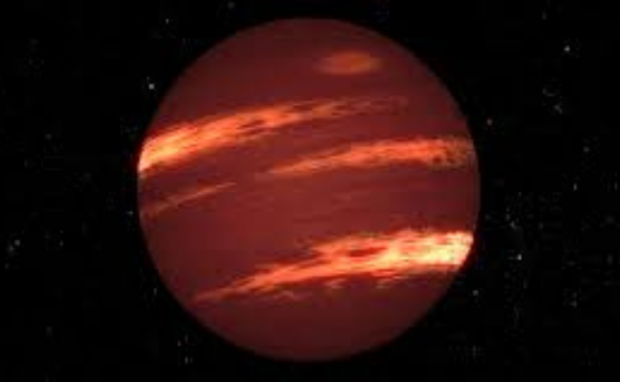NASA Bennu asteroid samples revealed
The National Aeronautics and Space Administration shared images of samples from the Bennu asteroid. In September 2023, the asteroid sampler container returned to Earth, but scientists struggled to open it until January 10, 2024. Later, NASA shared photos of its contents: black dust and rocks from our planet’s oldest satellite!
The OSIRIS-REx is the first US spacecraft to collect asteroid samples and bring them to Earth. Moreover, experts believe the samples could help us learn more about our solar system’s origins. Consequently, experts have been excited to open the sampler and analyze its contents. It is also cool to have parts of outer space for everyone to see.
This article will elaborate on the NASA Bennu asteroid pictures and the purpose of its study. Later, I will discuss another interesting interstellar discovery.
What do we know about the NASA Bennu asteroid samples?
It’s open! It’s open! And ready for its closeup. After successfully removing two final fasteners on Jan. 10, members of the @astromaterials team photographed the #OSIRISREx asteroid sample with a special technique to achieve super high-res images. https://t.co/bBrfFT3FoR pic.twitter.com/NTGMVFZCP3
— NASA Solar System (@NASASolarSystem) January 19, 2024
Experts believe the Bennu asteroid contains preserved building blocks from the dawn of our solar system. Consequently, the samples will help scientists better understand our solar system and planet.
NASA Administrator Bill Nelson says it could also help us understand how life formed on our planet 4.5 billion years ago. That is why the space agency sent the OSIRIS-REx craft to retrieve samples in 2016.
It reached the space rock two years later and scooped rubble using its long stick vacuum. In October 2023, it returned to Earth in Utah, but two stubborn fasteners prevented experts from opening it until January 10, 2024.
The space agency used high-resolution precision photography and a semi-automated focus stacking procedure to capture the NASA Bennu asteroid samples. As a result, the public received the extremely detailed image above.
It shows dust and rocks up to 0.4 inches or 1 cm in size. The space organization says, “The curation team members had already collected 2.48 ounces (70.3 grams) of asteroid material from the sample hardware before the lid was removed, surpassing the agency’s goal of bringing at least 2.12 ounces (60 grams) to Earth.”
You may also like: NASA’s WISE spacecraft to land on Dinkinesh asteroid
ScienceAlert says the team will spend the next few weeks determining the sample’s mass. Then, they will store the remaining samples from the Touch-and-Go-Sample-Acquisition-Mechanism (TAGSAM) head into pie-wedge sample trays.
The researchers will photograph and store them at the Johnson Space Center in Houston. Later, they will release a full sample catalog, prompting scientists to submit requests to display or research the samples.
“Finally, having the TAGSAM head open and full access to the returned Bennu samples is a monumental achievement that reflects the unwavering dedication and ingenuity of our team,” says astronomer Dante Lauretta of the University of Arizona Lunar and Planetary Laboratory.
Another space discovery

NASA also discovered the smallest star-like object in outer space at the beginning of 2024. Catarina Alves de Oliveira, the head of the Science Operations Development Division at the European Space Agency, looked for answers in the star cluster IC 348.
It is roughly 1,000 light-years away in the Perseus star-forming region. The ESA expert and her team found the smallest one, only a few times Jupiter’s mass. They captured an image using the JWST’s Near-Infrared Camera (NIRCam).
The researchers also followed up on the most promising targets using the (Near-Infrared Spectrograph) micro shutter array. It was a brown dwarf, one of the most unusual objects in the universe.
Most objects in outer space are planets, nebulas, stars, or black holes. However, brown dwarfs don’t fit into these categories. They’re not large enough to qualify as a star.
On the other hand, they’re not big enough to count as planets. The closest description is star-like; scientists typically call them “failed stars.” However, brown dwarfs are large enough to generate the right conditions to fuse with deuterium.
You may also like: Man searching for gold finds rare meteorite
That is how they generate heat and light that James Webb and other telescopes can detect. Eventually, they exhaust their deuterium reserves, making them harder to detect.
Kevin Luhman, an astronomy professor at Pennsylvania State University, stated, “Since brown dwarfs lack hydrogen fusion, they are relatively cool and glow brightest at infrared wavelengths.”
“As a result, an infrared telescope like JWST is the best option for trying to detect new brown dwarfs.”
Conclusion
NASA recently shared images of its Bennu asteroid samples, letting us glimpse a part of outer space. It’s exciting to see truly out-of-this-world stuff!
More importantly, it will spark further research into our solar system and planet. Soon, it will give us more answers about their formation billions of years ago.
Learn more about the NASA Bennu asteroid sample on its website. Moreover, check the latest digital tips and trends at Inquirer Tech.